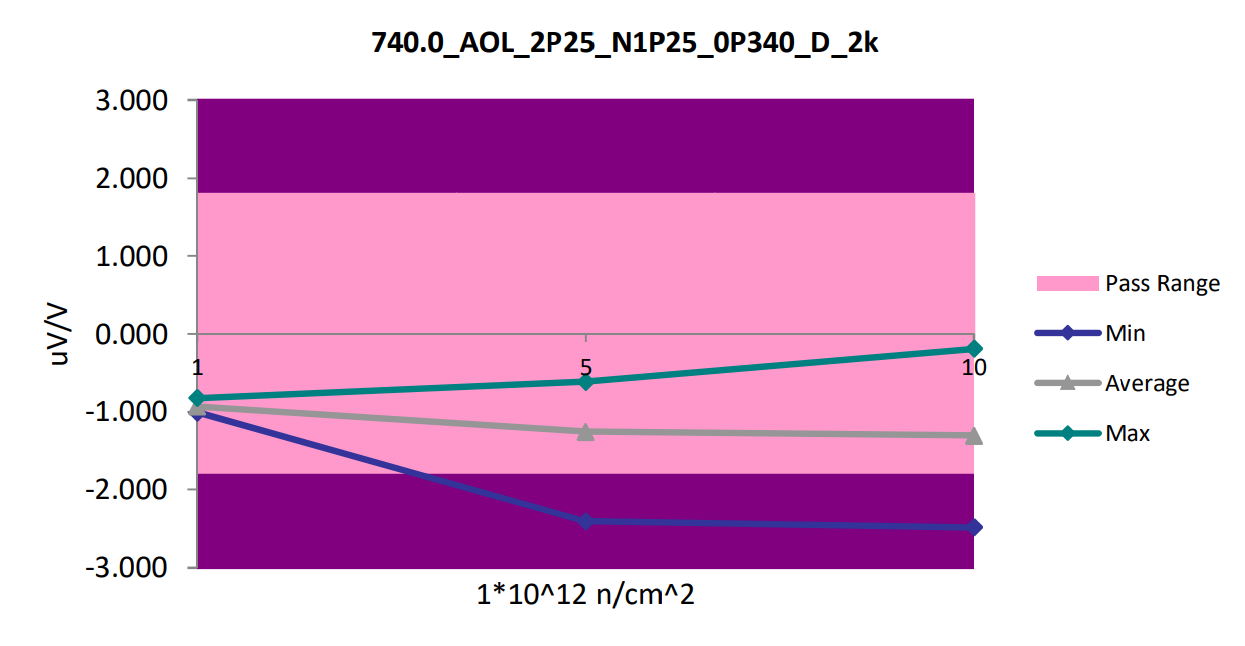SBOK049 November 2023 OPA4H014-SEP
PRODUCTION DATA
4.3 Other Parametric Shifts
Power-supply rejection ratio (PSRR) for the OPA4H014-SEP is specified as ±0.1 μV/V typical and ±0.5 μV/V minimum across the recommended operating temperature (TA = –55°C to +125°C). Power-supply rejection ratio was measured at VS = ±9 V, with test limits of ±0.37 μV/V for guardbanding purposes. One device sample, tested to 1 × 1013 n/cm2, was found to have a post-irradiation PSRR value of –0.373 μV/V, in excess of the test limit but nonetheless within the actual data sheet specification.
Open-loop gain (AOL) for the OPA4H014-SEP is specified as 126 dB (±0.5 μV/V) typical and 114 dB (±2 μV/V) maximum at TA = 25°C and with RL = 2 kΩ. Open-loop gain was measured at VS = ±2.25 V, with test limits of ±1.8 μV/V for guardbanding purposes. One device sample, tested to 5 × 1012 n/cm2, was found to have a post-irradiation AOL value of 2.411 μV/V for one channel, in excess of the data sheet specification. The AOL of the other three channels remained within the data sheet specifications and test limits. Another device sample, tested to 1 × 1013 n/cm2, was found to have a post-irradiation AOL value of 2.483 μV/V for one channel and 2.357 μV/V for another, in excess of the data sheet specification. The AOL of the other two channels of the sample remained within the data sheet specifications, with values of 1.292 μV/V and 1.951 μV/V. AOL remained within the data sheet specifications and test limits for all devices when measured at VS = ±9 V. Full data for all ATE tests performed are included in the report appendix.
 Figure 4-3 Sample Open-Loop Gain NDD
Graph
Figure 4-3 Sample Open-Loop Gain NDD
Graph